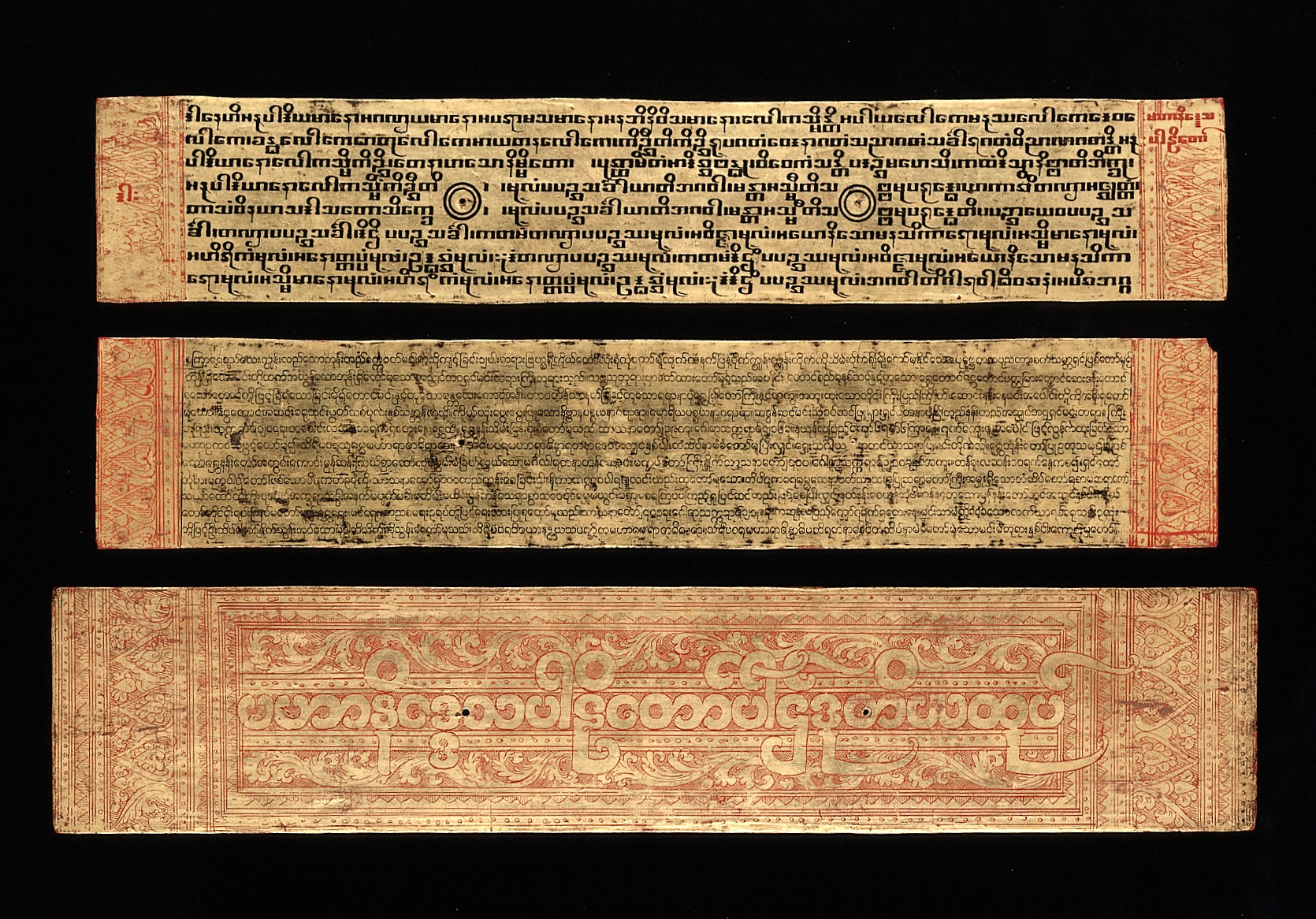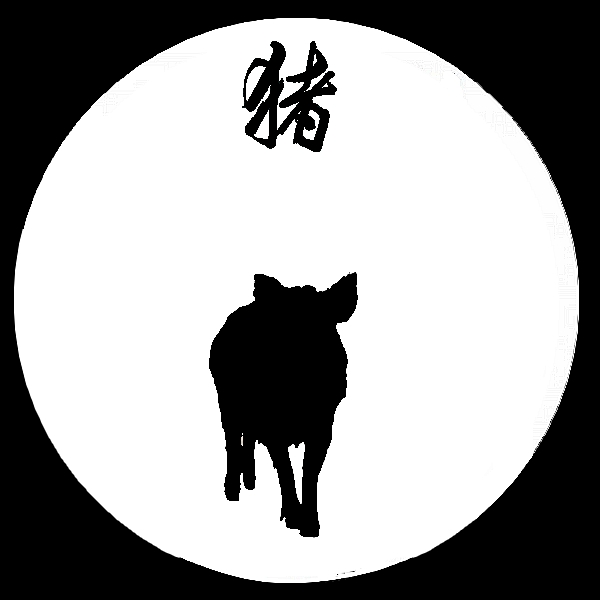|
Marshal Tianpeng
Marshal Tianpeng () is a deity in Chinese mythology and Taoism. He is best known for his role in the classic Chinese novel ''Journey to the West'' (), where he is reincarnated as Zhu Bajie, one of the main disciples of the monk Tang Sanzang. Marshal Tianpeng is revered as a powerful celestial general in Taoist tradition, often associated with the protection against evil spirits and the command of heavenly forces. Taoist beliefs and origin According to the Ming dynasty Taoist text ' (), Marshal Tianpeng was originally a historical figure named Bian Zhuang (), who lived during the same era as Confucius. Bian Zhuang was renowned as a heroic tiger slayer, and Confucius himself praised his bravery. Historical records describe him as a man of great filial piety who was also capable of killing tigers and displaying exceptional courage in battle. Marshal Tianpeng is regarded as one of the Four Saints of the North Pole (), alongside Marshal Tianyou (), the Protective Sage Yisheng (), and X ... [...More Info...] [...Related Items...] OR: [Wikipedia] [Google] [Baidu] |
Constellations
A constellation is an area on the celestial sphere in which a group of visible stars forms a perceived pattern or outline, typically representing an animal, mythological subject, or inanimate object. The first constellations were likely defined in prehistory. People used them to relate stories of their beliefs, experiences, creation, and mythology. Different cultures and countries invented their own constellations, some of which lasted into the early 20th century before today's constellations were internationally recognized. The recognition of constellations has changed significantly over time. Many changed in size or shape. Some became popular, only to drop into obscurity. Some were limited to a single culture or nation. Naming constellations also helped astronomers and navigators identify stars more easily. Twelve (or thirteen) ancient constellations belong to the zodiac (straddling the ecliptic, which the Sun, Moon, and planets all traverse). The origins of the zodiac re ... [...More Info...] [...Related Items...] OR: [Wikipedia] [Google] [Baidu] |
Chinese Gods
Chinese gods and immortals are beings in various Chinese religions seen in a variety of ways and mythological contexts. Many are worshiped as deities because traditional Chinese religion is polytheistic, stemming from a pantheistic view that divinity is inherent in the world. The gods are energies or principles revealing, imitating, and propagating the way of heaven (, ''Tian''), which is the supreme godhead manifesting in the northern culmen of the starry vault of the skies and its order. Many gods are ancestors or men who became deities for their heavenly achievements. Most gods are also identified with stars and constellations. Ancestors are regarded as the equivalent of Heaven within human society, and therefore, as the means of connecting back to Heaven, which is the "utmost ancestral father" (, ). There are a variety of immortals in Chinese thought, and one major type is the ''xian'', which is thought in some religious Taoism movements to be a human given long or infi ... [...More Info...] [...Related Items...] OR: [Wikipedia] [Google] [Baidu] |
Buddha
Siddhartha Gautama, most commonly referred to as the Buddha (),* * * was a wandering ascetic and religious teacher who lived in South Asia during the 6th or 5th century BCE and founded Buddhism. According to Buddhist legends, he was born in Lumbini, in what is now Nepal, to royal parents of the Shakya clan, but renounced his home life to live as a wandering ascetic. After leading a life of mendicancy, asceticism, and meditation, he attained nirvana at Bodh Gayā in what is now India. The Buddha then wandered through the lower Indo-Gangetic Plain, teaching and building a monastic order. Buddhist tradition holds he died in Kushinagar and reached ''parinirvana'' ("final release from conditioned existence"). According to Buddhist tradition, the Buddha taught a Middle Way between sensual indulgence and severe asceticism, leading to freedom from ignorance, craving, rebirth, and suffering. His core teachings are summarized in the Four Noble Truths and the Noble Ei ... [...More Info...] [...Related Items...] OR: [Wikipedia] [Google] [Baidu] |
Buddhist Scriptures
Buddhist texts are religious texts that belong to, or are associated with, Buddhism and its traditions. There is no single textual collection for all of Buddhism. Instead, there are three main Buddhist Canons: the Pāli Canon of the Theravāda tradition, the Chinese Buddhist Canon used in East Asian Buddhist tradition, and the Tibetan Buddhist Canon used in Indo-Tibetan Buddhism. The earliest Buddhist texts were not committed to writing until some centuries after the death of Gautama Buddha. The oldest surviving Buddhist manuscripts are the Gandhāran Buddhist texts, found in Pakistan and written in Gāndhārī, they date from the first century BCE to the third century CE. The first Buddhist texts were initially passed on orally by Buddhist monastics, but were later written down and composed as manuscripts in various Indo-Aryan languages (such as Pāli, Gāndhārī, and Buddhist Hybrid Sanskrit). These texts were collected into various collections and translated in ... [...More Info...] [...Related Items...] OR: [Wikipedia] [Google] [Baidu] |
Chang'e
Chang'e ( ; ), originally known as Heng'e (), is the goddess of the Moon and wife of Hou Yi, the great archer. Renowned for her beauty, Chang'e is also known for her ascending to the Moon with her pet Yu Tu, the Moon Rabbit and living in the Moon Palace (). She is one of the major goddesses in Chinese mythology, Chinese folk religion, Chinese Buddhism, Confucianism, and Taoism. In modern times, Chang'e is the namesake of the Chinese Lunar Exploration Program. Origins and descriptions Chang'e first appeared in '' Guicang'', a divination text written during the Zhou Dynasty (1046 BC – 256 BC). From the few preserved fragments of the text, it mentions "Yi shoots the ten Suns", and "Chang'e ascending to the moon." Chang'e—originally named —was renamed to avoid the taboo on sharing names with a deceased emperor, in this case, Liu Heng, an emperor from Han Dynasty. Many Chinese poems are written around the theme of Chang'e and the moon. In pre-Qin Dynasty (before 221 BC), ... [...More Info...] [...Related Items...] OR: [Wikipedia] [Google] [Baidu] |
Wu Cheng'en
Wu Cheng'en (, c. 1500–1582Shi Changyu (1999). "Introduction." in trans. W.J.F. Jenner, ''Journey to the West'', volume 1. Seventh Edition. Beijing: Foreign Languages Press. pp. 1–22. or 1505–1580), courtesy name Ruzhong (), was a Chinese novelist, poet, and politician during the Ming dynasty. He is considered by many to be the author of ''Journey to the West'', one of the Classic Chinese Novels. Biography Wu was born in Lianshui, Jiangsu province, and later moved to Huai'an. Wu's father, Wu Rui, had a good primary education and "shown an aptitude for study", but ultimately spent his life as an artisan because of his family's financial difficulties. Nevertheless, Wu Rui continued to "devote himself to literary pursuits", and as a child, Wu acquired the same enthusiasm for literature—including classical literature, popular stories, and anecdotes. He took the imperial examinations several times in attempt to become a mandarin, or imperial official, but never passed, ... [...More Info...] [...Related Items...] OR: [Wikipedia] [Google] [Baidu] |
Pig (zodiac)
The Pig ( 豬) or sometimes translated as the Boar is the twelfth of the 12-year cycle of animals which appear in Chinese zodiac, in relation to the Chinese calendar and system of horology, and paralleling the system of ten Heavenly Stems and twelve Earthly Branches. Although the term "zodiac" (etymologically referring to a " ircle oflittle animals") is used in the phrase "Chinese zodiac", there is a major difference between the Chinese usage and Western astrology: the zodiacal animals (including the zodiacal Pig) do not relate to the zodiac as the area of the sky that extends approximately 8° north or south (as measured in celestial latitude) of the ecliptic, the apparent path of the Sun, the Moon, and visible planets across the celestial sphere's constellations, over the course of the year. In Chinese astrology, "zodiacal" animals refer to fixed cycles of twelve animals. The same cycle of twelve is used for cycles of years and cycles of hours. In the case of years, the ... [...More Info...] [...Related Items...] OR: [Wikipedia] [Google] [Baidu] |
Northern Pole
Northern Pole (北极 in Simplified Chinese, ''běi jí'' in Pinyin) is a traditional Chinese asterism found in the Purple Forbidden enclosure (紫微垣 in Simplified Chinese, ''zǐ wēi yuán'' in Pinyin). It consists of five stars found in the modern constellations of Ursa Minor and Camelopardalis and represents the five stars of the North Pole. During the Qing dynasty, a total of four stars from the constellation Ursa Minor was added to the asterism. {, class="wikitable" , - ! Order !! English name !! Chinese name !! Corresponding star , - , 1 (北极一) , , The Crown Prince , , 太子 , , Gamma Ursae Minoris (Pherkad) , - , 2 (北极二) , , The Emperor , , 帝 , , Beta Ursae Minoris (Kochab) , - , 3 (北极三) , , The Son of Concubine , , 庶子 , , 5 Ursae Minoris , - , 3+1 (庶子增一) , , The Son of Concubine , , 庶子 , , unclear, in Ursa Minor , - , 3+2 (庶子增二) , , The Son of Concubine , , 庶子 , , 3 Ursae Minoris , - , 3+3 (庶子� ... [...More Info...] [...Related Items...] OR: [Wikipedia] [Google] [Baidu] |
Big Dipper
The Big Dipper (American English, US, Canadian English, Canada) or the Plough (British English, UK, Hiberno-English, Ireland) is an asterism (astronomy), asterism consisting of seven bright stars of the constellation Ursa Major; six of them are of second magnitude star, second magnitude and one, Megrez (δ), of third magnitude. Four define a "bowl" or "body" and three define a "handle" or "head". It is recognized as a distinct grouping in many cultures. The North Star (Polaris), the current northern pole star and the tip of the handle of the Little Dipper (Little Bear), can be located by extending an imaginary line through the front two stars of the asterism, Beta Ursae Majoris, Merak (β) and Alpha Ursae Majoris, Dubhe (α). This makes it useful in celestial navigation. Names and places The constellation of ''Ursa Major'' (Latin language, Latin: Greater Bear) has been seen as a bear, a wagon, or a ladle (spoon), ladle. The "bear" tradition is Proto-Indo-European mythology, ... [...More Info...] [...Related Items...] OR: [Wikipedia] [Google] [Baidu] |
Canopy
Canopy may refer to: Plants * Canopy (biology), aboveground portion of plant community or crop (including forests) * Canopy (grape), aboveground portion of grapes Religion and ceremonies * Baldachin or canopy of state, typically placed over an altar or throne * Chuppah, a canopy used in Jewish wedding ceremonies * Umbraculum, a canopy awarded by the pope to basilicas * Vapor canopy, a creationist idea that earth was surrounded by a "canopy" of water As a proper name Transportation * Canopy (aircraft), transparent enclosure over aircraft cockpit * Camper shell, or canopy, a raised, rigid covering for the rear bed of a pickup truck * Honda Canopy, a three-wheeled automobile from Honda Brands and organizations * Canopy (hotel), a brand within the corporate structure of Hilton Worldwide * Canopy Group, U.S. investment firm * OP Canopy, Canadian Forces Operation Computing * Enthought Canopy, a Python distribution and analysis environment for scientific and analytic computing * ... [...More Info...] [...Related Items...] OR: [Wikipedia] [Google] [Baidu] |




